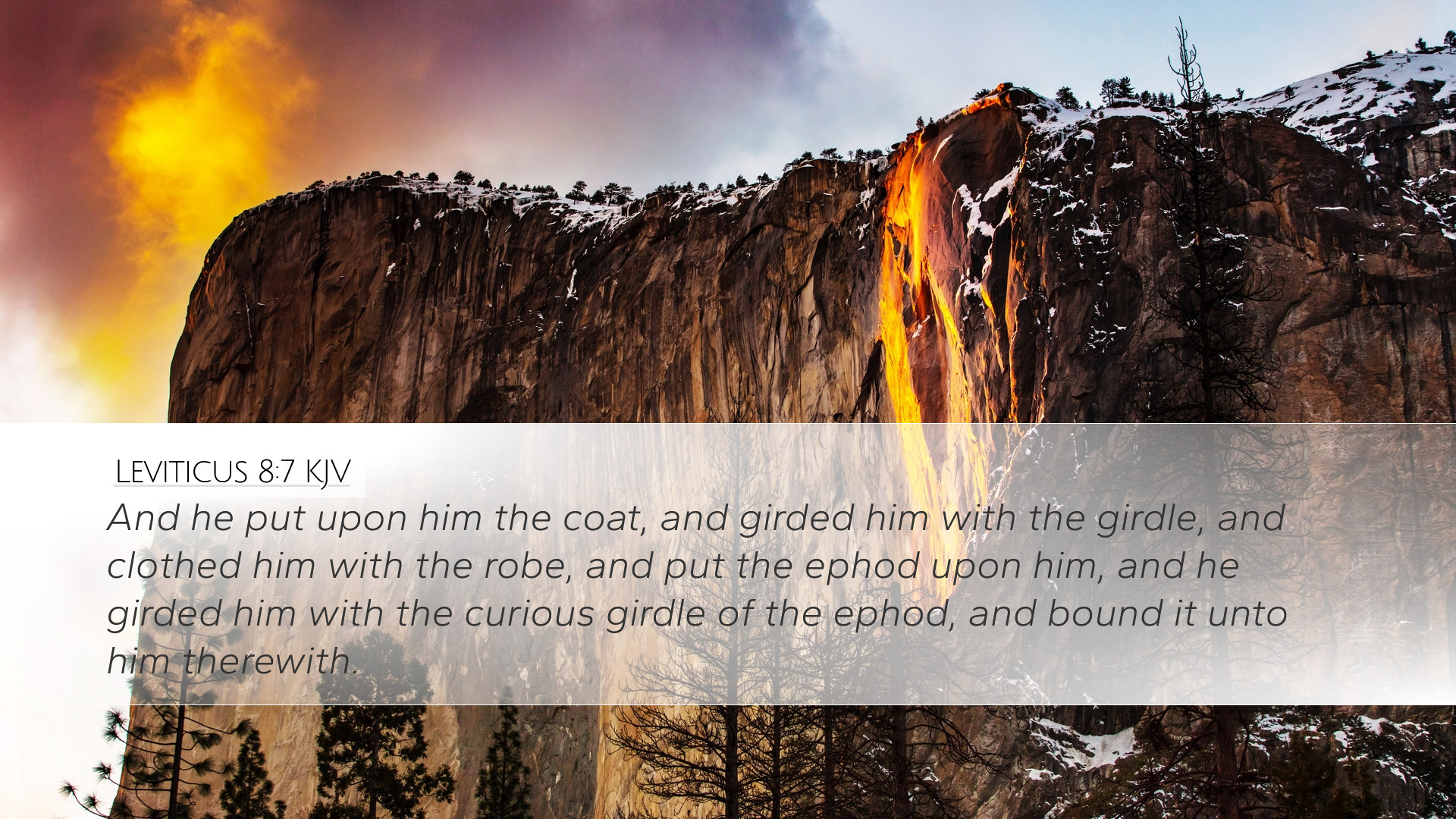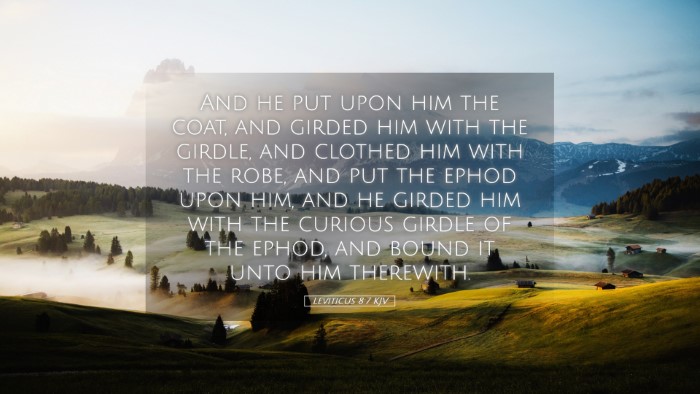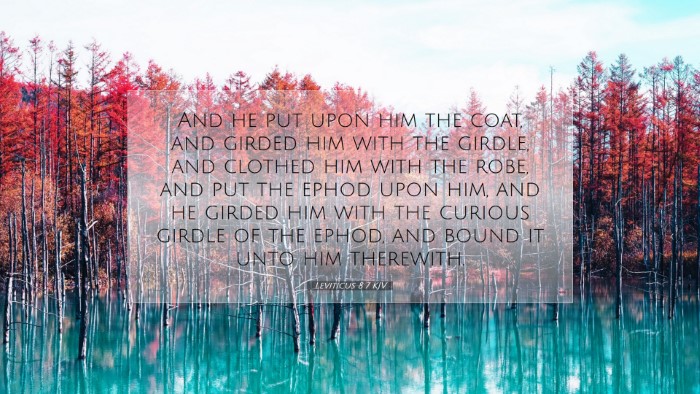Leviticus 8:7 reads: "And he put upon him the coat, and girded him with the girdle, and clothed him with the robe, and put the ephod upon him: and he girded him with the curious girdle of the ephod, and bound it unto him therewith."
Overview
The eighth chapter of Leviticus is a key passage describing the consecration of Aaron and his sons as priests. This act of ordination marks a significant moment in Israel's sacrificial system and priestly functions. In this commentary, we will explore the various elements involved in the ceremonial investiture of the priesthood, drawing insights from influential public domain commentaries.
Significance of Vestments
Matthew Henry emphasizes the importance of the priestly garments, suggesting they are not merely for adornment but are filled with symbolic meaning. Each piece of clothing carries spiritual significance, representing the duties and the holiness required of the priesthood.
- The Coat: This symbolizes righteousness. It covers and conceals, reflecting how the priest stands before God on behalf of the people.
- The Girdle: It signifies readiness and strength. The girdle kept the garments in place, allowing the priest to perform his duties without hindrance.
- The Robe: This garment represents glory and beauty. It is indicative of the solemnity of the priestly office.
- The Ephod: The ephod, an essential aspect of the priest's attire, represents divine guidance and communication, embodying the connection between God and His people.
Cultural and Theological Insights
Albert Barnes provides additional context by explaining the cultural background of priestly garments. These garments were designed not just for functionality but to also inspire reverence among the people. The elaborate nature of the priestly attire denoted the holiness of the service to which Aaron and his sons were called.
He notes that the investiture was a public acknowledgment of God’s choice of Aaron as the high priest, which would cement the priestly lineage within Israel. This choice underscores the integral role of the priest in mediating between God and the people.
The Role of the Girdle
Adam Clarke highlights the girdle's role and states it serves not only as a means of securing the garments but also symbolizes the binding commitments of the priest to his duties. The girdle binds all the garments together, just as the responsibilities of the priest must be unified by commitment to God’s service.
This suggests that effectiveness in spiritual leadership requires a heart and will disciplined to serve God and the people faithfully.
Priestly Ordination and anointing
The ceremony described goes beyond mere clothing; it includes anointing. Anointing with oil is a crucial aspect of setting someone apart for God’s purposes.
Henry points out that this act of anointing symbolizes the empowerment of the Holy Spirit. It signifies that the priest operates under divine authority. The role of the priest is not only to intercede but also to represent God's will to the community.
Application for Today’s Believers
For contemporary believers, the priestly garments symbolize the calling to holiness and service. Just as Aaron was adorned in specific attire for service, modern believers are called to clothe themselves in righteousness and humility, as stated in 1 Peter 2:9, where they are referred to as a royal priesthood.
Both Barnes and Clarke emphasize that today’s believers must understand their identity as priests, possessing a responsibility to engage in worship, prayer, and intercession for others.
- Inner Holiness: Just as the priests were outwardly adorned, modern believers are called to cultivate inner holiness.
- Readiness to Serve: The girdle symbolizes readiness. Believers should always be prepared to serve and respond to God's leading.
- Shared Identity: The priesthood of all believers suggests that every believer carries the responsibility of representing Christ to the world.
Conclusion
Leviticus 8:7 not only recounts a historical rite but also embeds profound theological truths about service, holiness, and divine calling. The insights gleaned from Matthew Henry, Albert Barnes, and Adam Clarke serve as powerful reflections for pastors, students, and theologians as they seek to understand their roles in the body of Christ and their allegiance to God. Each element of the priestly garments has relevance that transcends time, encouraging believers to aspire to a higher standard of living that reflects their identity as God’s chosen people.


